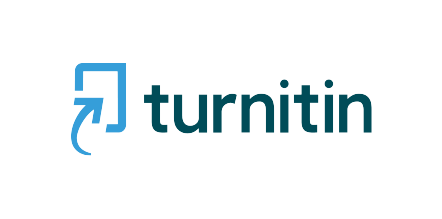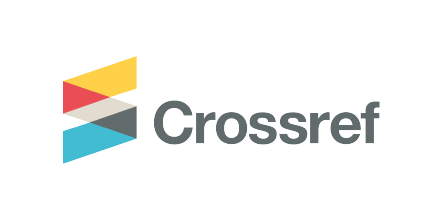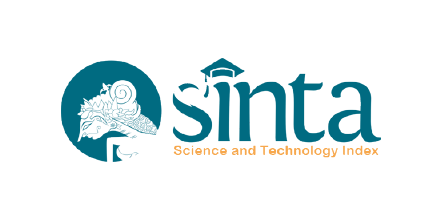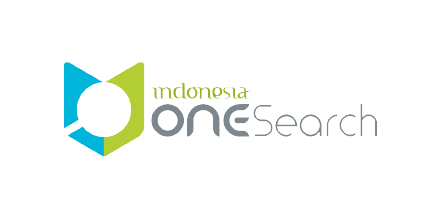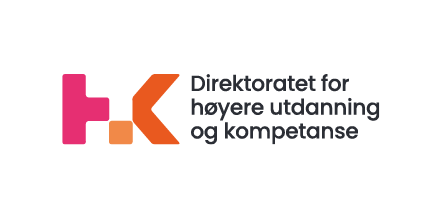Inclusive Digital Financial Services for Persons with Disabilities
Impact on Economic Empowerment and Financial Inclusion
DOI:
https://doi.org/10.21776/ub.ijds.2023.010.01.10Keywords:
Financial Inclusion, Digital Financial Services, Disability, Accessibility, Economic EmpowermentAbstract
Financial inclusion has emerged as a policy concern in many countries, leading to various initiatives to promote financial inclusion for marginalised populations, including persons with disabilities (PwD). This research examines the usage of financial services by PwD in developed and developing countries through a systematic literature review (SLR) and relevant descriptive statistics. The findings shed light on significant barriers hindering PwD to financial services, such as information asymmetry, complex banking procedures, insufficient sensitivity towards disabilities that result in less accommodating financial services, and limited innovation in banking services. The findings suggest that improving financial literacy and adopting inclusive digital financial services are keys to improving financial inclusion for PwD.
References
Adeyanju, O. D. (2012). An assessment of the impact of corporate social responsibility on Nigerian society: The examples of banking and communication industries
Aertgeerts, B & Cools, Filip. (2007). The Cochrane Collaboration and systematic literature reviews about the efficiency of a treatment. Verhandelingen - Koninklijke Academie voor Geneeskunde van België. 69. 335-50.
AFI. (2019). Digital Financial Services Indicators. Malaysia: Alliance for Financial Inclusion. Retrieved from. https://www.afi-global.org/sites/default/files/publications/2019-07/AFI_GN33_DFS_AW_Digital.pdf
Afkari, F., & Maulana, D. F. (2021), "Urgensi Aksesibilitas bagi Penyandang Disabilitas pada Perbankan Berbasis Inklusi Keuangan,” Jurnal Penelitian Kesejahteraan Sosial, 20(3), 217-232. https://doi.org/10.31105/jpks.v21i3.2759
Agur, I., Peria, S. M., & Rochon, C. (2020). Digital financial services and the pandemic: Opportunities and risks for emerging and developing economies. International Monetary Fund Special Series on COVID-19, Transactions, 1, 2-1
Ahmad, M., Majeed, A., Khan, M. A., Sohaib, M., & Shehzad, K. (2021). "Digital financial inclusion and economic growth: Provincial data analysis of China,” China Economic Journal, 14(3), 291-310. https://doi.org/10.1108/AJEMS-09-2022-0372
Alonso, Sergio Luis Náñez, Javier Jorge-Vazquez, Miguel Ángel Echarte Fernández, Konrad Kolegowicz, and Wojciech Szymla. (2022). "Financial Exclusion in Rural and Urban Contexts in Poland: A Threat to Achieving SDG Eight?" Land 11, no. 4: 539. https://doi.org/10.3390/land11040539
Aranda-Jan, C. (2020). “The Mobile Disability Gap Report 2020”. London: GSMA
Ashenafi, B. B., & Dong, Y. (2022). Financial Inclusion, Fintech, and Income Inequality in Africa. FinTech, 1(4), 376-387. https://doi.org/10.3390/fintech1040028
Aziz, Abdul & Naima, Umma, (2021). "Rethinking digital financial inclusion: Evidence from Bangladesh," Technology in Society, Elsevier, vol. 64(C).
Badan Pusat Statistik (BPS). (2020), Statistik Pemuda Indonesia 2020. Jakarta: Badan Pusat Statistik
Badan Pusat Statistik (BPS). (2021), Buku 4 Pedoman Konsep Definisi dan Tata Cara Pengisian Kuesioner SUSENAS Maret 2021. Jakarta: Badan Pusat Statistik
Banks, L. M., Davey, C., Shakespeare, T., & Kuper, H. (2021). “Disability-inclusive responses to COVID-19: Lessons learned from research on social protection in low-and middle-income countries,” World Development, p. 137, 105178. https://doi.org/10.1016/j.worlddev.2020.105178
Barlott, T., Aplin, T., Catchpole, E., Kranz, R., Le Goullon, D., Toivanen, A., & Hutchens, S. (2020). "Connectedness and ICT: Opening the door to possibilities for people with intellectual disabilities," Journal of Intellectual Disabilities, 24(4), 503–521. https://doi.org/10.1177/1744629519831566
Beisland, L. A., & Mersland, R. (2012). "The use of microfinance services among economically active disabled people: Evidence from Uganda," Journal of International Development, 24, S69-S83. http://hdl.handle.net/11250/136018
Beresford, P. (2010). "Re-examining relationships between experience, knowledge, ideas, and research: A key role for recipients of state welfare and their movements," Social Work & Society, 8(1), 6-21
Bill & Melinda Gates. (2021).Annual Report 2021. Retrived from 15 March 2023, https://www.gatesfoundation.org/
CGAP. (2015). A world where everyone has access to and can Use the financial Services they need to improve their lives. Washington: Consultative Group to Assist the Poor. Retrieved from https://www.cgap.org/about/key-documents/cgap-annual-report-2015
Chen, S., Liang, M., & Yang, W. (2022). "Does Digital Financial Inclusion Reduce China's Rural Household Vulnerability to Poverty: An Empirical Analysis from the Perspective of Household Entrepreneurship," SAGE Open, 12(2), https://doi.org/10.1177/21582440221102423
Cicchiello, A. F., Kazemikhasragh, A., Monferrá, S., & Girón, A. (2021). "Financial inclusion and development in the least developed countries in Asia and Africa," Journal of Innovation and Entrepreneurship, 10(1), 1-13. https://doi.org/10.1186/s13731-021-00190-4
Creta, F., & Mazaj, J. (2021)," Can FinTech Progress the Real Estate Sector? The Disruptive Role of Crowdfunding & Blockchain: A Systematic Literature Review," European Journal of Islamic Finance, (17). https://doi.org/10.13135/2421-2172/5323
de la Cuesta-González, M., Paredes-Gazquez, J., Ruza, C., & Fernández-Olit, B. (2021), "The relationship between vulnerable financial consumers and banking institutions. A qualitative study in Spain," Geoforum, 119, 163–176. https://doi.org/10.1016/j.geoforum.2021.01.006
Demirgüç-Kunt, A., L. Klapper, D. Singer and S. Ansa. (2021), The Global Findex Database 2021: Financial Inclusion, Digital Payments and Resilience in the Age of COVID-19. Washington, DC: The World Bank
Elena, T., Ekaterine, G., & Gyuzal, K. (2018), Development of Innovative Banking Products and Technologies for People with Disabilities. In 4th International Conference on Economics, Management, Law, and Education (EMLE 2018) (pp. 29–33). Atlantis Press. https://doi.org/10.2991/emle-18.2018.6
Federal Deposit Insurance Corporation. (2021), 2021 Annual Report. Washington: FDIC
Feghali, K., Mora, N., & Nassif, P. (2021), "Financial inclusion, bank market structure, and financial stability: International evidence," The Quarterly Review of Economics and Finance, 80, 236–257. https://doi.org/10.1016/j.qref.2021.01.007
Fernández-Olit, B., Martín Martín, J. M., & Porras González, E. (2020), "Systematized literature review on financial inclusion and exclusion in developed countries," International Journal of Bank Marketing, 38(3), 600-626. https://doi.org/10.1108/IJBM-06-2019-0203
Gautam, R. S., Kanoujiya, J., Bhimavarapu, V. M., & Rastogi, S. (2021), "Financial Technology and Its Impact on Poverty in India," International Journal of Management and Humanities (IJMH), 6(3), 1–10. http://dx.doi.org/10.35940/ijmh.B1396.116321
Glencross, S., Mason, J., Katsikitis, M., & Greenwood, K. M. (2021), "Internet use by people with intellectual disability: Exploring digital inequality—A systematic review," Cyberpsychology, Behavior, and Social Networking, 24(8), 503–520. https://doi.org/10.1089/cyber.2020.0499
Goggin, G., Yu, H., Fisher, K. R., & Li, B. (2019), "Disability, technology innovation and social development in China and Australia," Journal of Asian Public Policy, 12(1), 34–50. https://doi.org/10.1080/17516234.2018.1492067
Goundar, S., & Sathye, M. (2023)," Exploring Access to Financial Services by Visually Impaired People," Journal of Risk and Financial Management, 16(2), 96. https://doi.org/10.3390/jrfm16020096
GPFI. (2016). Progres report to G20 Leaders. G20 Summit, Hangzhou, 4-6 September 2016. Retrieved from https://www.gpfi.org/sites/gpfi/files/documents/GPFI%202016%20Progress%20Report%20to%20G20%20Leaders.pdf
Gronbach, L. (2020), "Social cash transfer payment systems in sub-Saharan Africa," CSSR Working Paper, 452
Hafni, D. A., & Rahmawati, F. M. (2020), "Aksesibilitas permodalan perbankan bagi wirausahawan difabel di DI Yogyakarta untuk mewujudkan ekonomi inklusi," KOMPARTEMEN: Jurnal Ilmiah Akuntansi, 17(2). http://dx.doi.org/10.30595/kompartemen.v17i2.3629
Hannig, A., & Jansen, S. (2010). Financial inclusion and financial stability: Current policy issues. https://dx.doi.org/10.2139/ssrn.1729122
Hassan, A., Abd El-Aziz, R., & Hamza, M. (2020). "The Exclusion of People with Visual Disabilities from Digital Banking Services in the Digitalization Era," Journal of Electronic Banking Systems, 2020
Hassouba, T. A. (2023). Financial inclusion in Egypt: the road ahead. Review of Economics and Political Science, https://doi.org/10.1108/REPS-06-2022-0034
https://doi.org/10.1016/j.geoforum.2020.12.022
Iliya, A. A., & Ononiwu, C. (2021). “Mechanisms for mobile phone use in empowerment: A critical realist study of people with disabilities in Nigeria,” The Electronic Journal of Information Systems in Developing Countries, 87(2), e12158. https://doi.org/10.1002/isd2.12158
Indonesia. (2016). Law Number 8 Year 2016 regarding Person with Disabilities. Jakarta
Indonesia. (2020). Peraturan Presiden (PERPRES) Number 114 Year 2020 regarding Strategi Nasional Keuangan Inklusif. Jakarta
Ji, X., Wang, K., Xu, H., & Li, M. (2021). "Has digital financial inclusion narrowed the urban-rural income gap: The role of entrepreneurship in China," Sustainability, 13(15), 8292. https://doi.org/10.3390/su13158292
Jiya, A. N., Opoku, M. P., Nketsia, W., Dogbe, J. A., & Adusei, J. N. (2022). "Achieving financial inclusion for persons with disabilities: Exploring preparedness and accessibility of financial services for persons with disabilities in Malawi," Journal of Disability Policy Studies, 33(2), 92-102. https://doi.org/10.1177/10442073211027533
Kameswaran, V., & Marathe, M. (2023). Advocacy as Access Work: How People with Visual Impairments Gain Access to Digital Banking in India
Kharisma, D. B. (2020). "Urgency of financial technology (Fintech) laws in Indonesia," International Journal of Law and Management, 63(3), 320-331. https://doi.org/10.1108/IJLMA-08-2020-0233
Lame, G. (2019). Systematic Literature Reviews: An Introduction, Proceedings of the Design Society: International Conference on Engineering Design, 1(1), 1633–1642. doi:10.1017/dsi.2019.169. https://doi.org/10.1017/dsi.2019.169
Lee, Y. K., Park, J. H., Chung, N., & Blakeney, A. (2012). "A unified perspective on the factors influencing usage intention toward mobile financial services," Journal of Business Research, 65(11), 1590-1599. https://doi.org/10.1016/j.jbusres.2011.02.044
Lyons, A. C., J. Kass-Hanna, F. Liu, A. J. Greenlee, and L. Zeng. (2020). “Building Financial Resilience through Financial and Digital Literacy in South Asia and Sub-Saharan Africa”. ADBI Working Paper 1098. Tokyo: Asian Development Bank Institute. Available: https://www.adb.org/publications/building-financial-resilience-through-financial-digitalliteracy-south-asia-saharan-africa
McGarity, S. V., & Caplan, M. A. (2019). "Living outside the financial mainstream: Alternative financial service use among people with disabilities," Journal of Poverty, 23(4), 317–335. https://doi.org/10.1080/10875549.2018.1555731
Mogaji, E. (2020).”Consumers' Financial Vulnerability When Accessing Financial Services,” Research Agenda Working Papers", 2020(3), 27–39. https://ssrn.com/abstract=3562889
Mogaji, E., Adeola, O., Hinson, R. E., Nguyen, N. P., Nwoba, A. C., & Soetan, T. O. (2021). "Marketing bank services to financially vulnerable customers: evidence from an emerging economy," International Journal of Bank Marketing, 39(3), 402–428. https://doi.org/10.1108/IJBM-07-2020-0379
Nkoa, B. E. O., & Song, J. S. (2020). "Does institutional quality affect financial inclusion in Africa? A panel data analysis," Economic Systems, 44(4), 100836. https://doi.org/10.1016/j.ecosys.2020.100836
Nuzzo, G., & Piermattei, S. (2020). "Discussing measures of financial inclusion for the main Euro area countries," Social Indicators Research, 148, 765-786. https://doi.org/10.1007/s11205-019-02223-8
Ofori-Okyere, I., Edghiem, F. & Kumah, S.P. (2023). "Marketing inclusive banking services to financially vulnerable consumers: a service design approach," Journal of Services Marketing, Vol. 37 No. 2, pp. 232-247. https://doi.org/10.1108/JSM-10-2021-0399
Otoritas Jasa Keuangan.(2021), National Strategy on Indonesian Financial Literacy. Jakarta: Otoritas Jasa Keuangan.
Ozili, P. K. (2018). "Impact of digital finance on financial inclusion and stability," Borsa Istanbul Review, 18(4), 329–340. https://doi.org/10.1016/j.bir.2017.12.003
Pazarbasioglu, C., Mora, A. G., Uttamchandani, M., Natarajan, H., Feyen, E., & Saal, M. (2020), Digital financial services. World Bank, 54
Peprah, J. A., Avorkpo, E. A., & Kulu, E. (2022). People with Disability and access to financial services: Evidence from Ghana. https://doi.org/10.21203/rs.3.rs-1781235/v1
Prajapati, Kajol & Singh, Ranjit & Paul, Justin. (2022). “Adoption of digital financial transactions: A review of literature and future research agenda”. Technological Forecasting and Social Change, (Vol. 184). https://doi.org/10.1016/j.techfore.2022.121991.
Putri, A. A. R. H., & Halim, A. (2023), "Kebijakan Hukum Terhadap Hak-Hak Disabilitas Dalam Layanan Jasa Keuangan Di Indonesia,” Al-Mashlahah Jurnal Hukum Islam dan Pranata Sosial, 10(001). http://dx.doi.org/10.30868/am.v10i001.3474
Raja, D. S. (2016). Bridging the Disability divide through digital technologies. Background paper for the World Development report
Rana, N. P., Luthra, S., & Rao, H. R. (2020). "Key challenges to digital financial services in emerging economies: the Indian context," Information Technology & People, 33(1), 198–229. https://doi.org/10.1108/ITP-05-2018-0243
Romānova, I., & Kudinska, M. (2016). "Banking and fintech: A challenge or opportunity? In Contemporary issues in finance: Current challenges from across Europe," Emerald Group Publishing Limited, (Vol. 98, pp. 21-35)
Sarker, D. (2015). "Inclusion of disabled people in microfinance institutions: Where does Bangladesh stand," International Journal of Innovation and Economic Development, 1(1), 67-79
Setianti, Y., Hafiar, H., Subekti, P., & Priyatna, C. C. (2020). Social Conditions and Expectations of Customers with Disabilities Regarding Policies and Provision of Accessible Banking Technology, In ICCIRS 2019: Proceedings of the First International Conference on Christian and Inter-Religious Studies, ICCIRS 2019, December 11-14 2019, Manado, Indonesia (p. 190). European Alliance for Innovation
Singh, C. (2017). “Financial inclusion of people with disabilities,” IIM Bangalore Research Paper, (556). https://dx.doi.org/10.2139/ssrn.3024576
Subekti, P., Hafiar, H., & Setianti, Y. (2021). "Technology of Auto Teller Machine Interface: Accessibility for Bank Customer with Visual Impairments," In Journal of Physics: Conference Series (Vol. 1783, No. 1, p. 012024). IOP Publishing. DOI 10.1088/1742-6596/1783/1/012024
Tay, L. Y., Tai, H. T., & Tan, G. S. (2022). Digital financial inclusion: A gateway to sustainable development. Heliyon, e09766. https://doi.org/10.1016/j.heliyon.2022.e09766
Thohari, S., & Rizky, U. F. (2021). "Persons with disabilities' financial literacy and access to financial services," Jurnal Ekonomi dan Bisnis, 24(1), 47-64. https://doi.org/10.24914/jeb.v24i1.3675
Thompson S. (2018). Mobile Technology and Inclusion of Persons with Disabilities, K4D Emerging Issues Report. Brighton, UK: Institute of Development Studies United Nations (2018), Disability and Development Report-Realizing the Sustainable Development Goals by, for and with persons with Disability. New York: United Nations. https://opendocs.ids.ac.uk/opendocs/handle/20.500.12413/13834
United Nations. (2018). Disability and Development Report: Realizing the Sustainable Development Goals for and with persons with disabilities. New York: United Nations
van Holstein, E., Wiesel, I., Bigby, C., & Gleeson, B. (2021), "People with intellectual disability and the digitization of services," Geoforum, pp. 119, 133-142
Vives, X. (2017). The impact of FinTech on banking. European Economy, (2), pp. 97-105
Wann, C. R., & Burke-Smalley, L. (2022). "Differences in financial inclusion by disability type,”. International Journal of Bank Marketing, https://doi.org/10.1108/IJBM-06-2022-0242
Watling, S. (2011). "Digital exclusion: coming out from behind closed doors," Disability & Society, 26(4), 491–495. https://doi.org/10.1080/09687599.2011.567802
WHO. (2019), World Health Statistic: Monitoring Health for The SDGs. Geneva: World Health Organization
Xiao, Y., & Watson, M. (2019). "Guidance on conducting a systematic literature review," Journal of planning education and research, 39(1), 93–11.
Published
How to Cite
License
Copyright (c) 2023 Bagus Santoso

This work is licensed under a Creative Commons Attribution-NonCommercial 4.0 International License.








